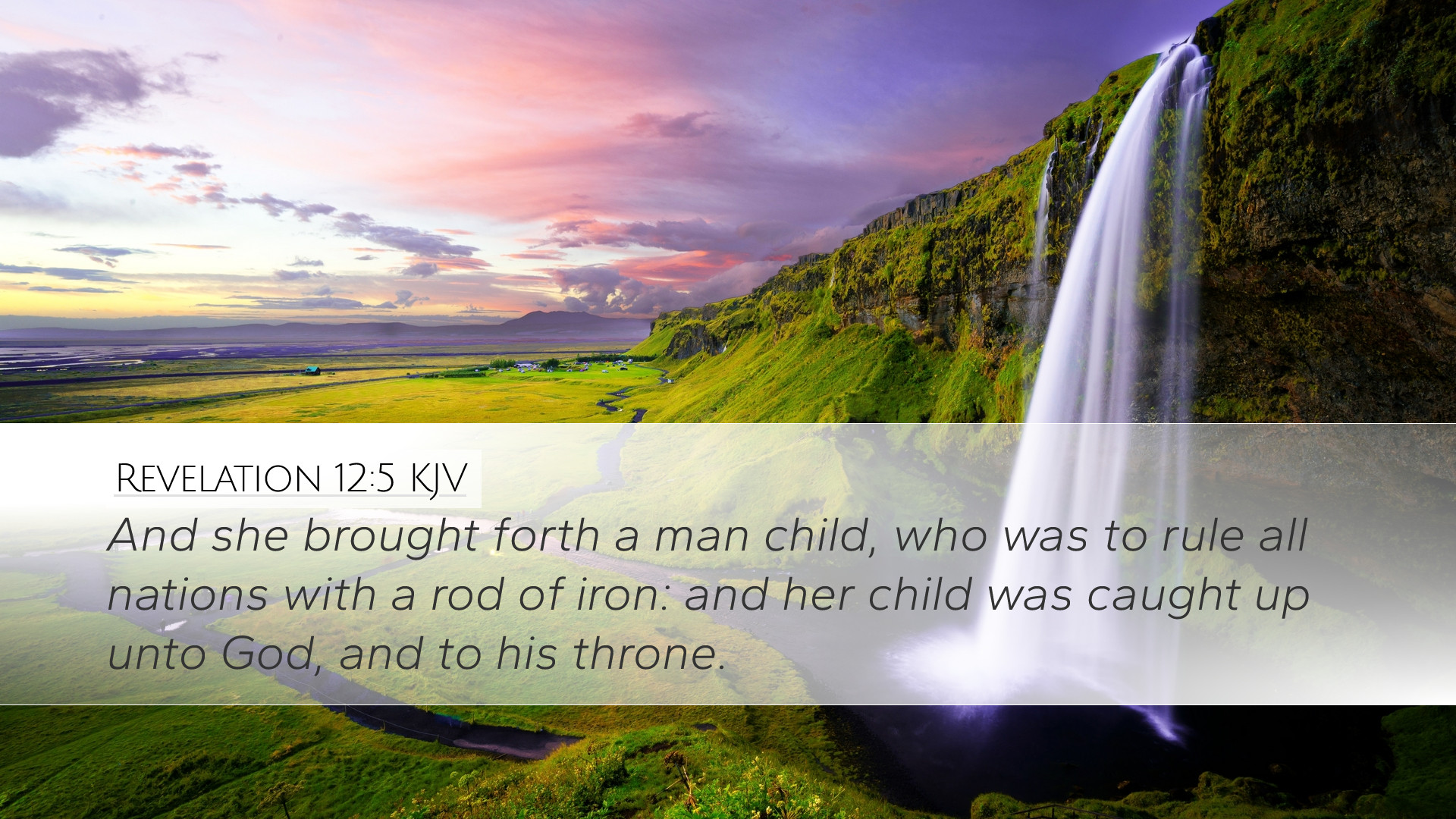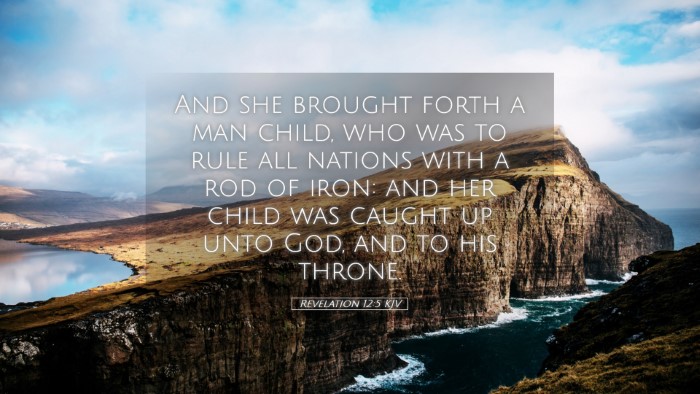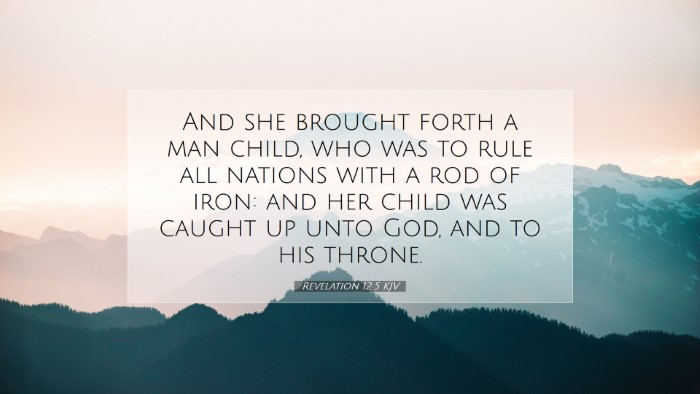Commentary on Revelation 12:5
Revelation 12:5 states: "And she brought forth a man child, who was to rule all nations with a rod of iron: and her child was caught up unto God, and to his throne." This verse serves as a pivotal moment in the cosmic battle between good and evil, illustrating the birth and ascension of Christ as central to God’s redemptive plan.
Contextual Overview
This segment of Revelation depicts a woman in travail, symbolic of Israel or the faith community, who brings forth the Messiah. This imagery projects the struggle and eventual triumph of God's purpose amidst tribulation.
Insights from Matthew Henry
Matthew Henry interprets this verse as a proclamation of the dawning of hope through the birth of the Savior. He writes, "The man child who was to rule all nations with a rod of iron signals the authority and sovereignty given to Christ the Messiah." Henry emphasizes that this ruling with an iron rod signifies the ultimate justice of Christ, contrasting with the chaos and oppression of earthly rulers.
Moreover, he points out that the phrase “caught up unto God” indicates Christ's ascension, which is pivotal for the believer’s hope. As Christ ascended, so too will believers one day rise with Him, affirming the promise of victory over sin and death.
Insights from Albert Barnes
Albert Barnes offers a detailed analysis of the symbolism in this passage. He notes, "The 'man child' represents Jesus Christ, whose sovereign power is established over nations through His divine authority.” Barnes highlights the enduring significance of Christ’s rulership, noting that the “rod of iron” signifies both strength and the ultimate authority of divine governance on earth.
Barnes elaborates that the imagery of the child being caught up unto God reflects the ascension narrative found in the Gospels, reinforcing the truth that Christ's mission was divinely ordained and eternally significant. He further suggests that this ascension reassures believers about the ongoing intercession of Christ on their behalf.
Insights from Adam Clarke
Adam Clarke provides an intricate theological reflection on the prophecy contained within this verse. He asserts, "The reference to ruling with a rod of iron signifies not only strength but also the establishment of a new covenant and kingdom that transcends the old." This observation emphasizes the transformative power of Christ’s kingship, restoring order to a chaotic world.
Clarke also comments on the implications of the phrase "caught up unto God," interpreting it as an affirmation of Christ's exalted status and the believer's future hope in resurrection and eternal life. He encourages readers to see this as a fulfillment of Old Testament prophecies regarding the Messiah’s dominion and glory.
Theological Implications
This passage not only affirms Jesus' dual nature as fully divine and fully human but also details the implications of His kingship for the church. Each commentary reflects a shared understanding that the birth, life, and ascension of Christ mark the fulfillment of God’s redemptive plan.
- Christ's Sovereignty: The man child represents the ultimate authority over nations, establishing Christ's sovereignty over all creation.
- The Role of Israel: The woman symbolizes Israel, highlighting God’s faithfulness in fulfilling His promises through the lineage of the Jewish people.
- Victory over Evil: This verse encapsulates the cosmic struggle taking place, assuring believers of victory through Christ’s ultimate conquest over sin and death.
Conclusion
Revelation 12:5 is a profound reminder of God's plan for humanity through the birth, ascension, and future reign of Jesus Christ. It presents key doctrines regarding the nature of Christ’s authority, the fulfillment of prophecy, and the assurance of eternal life for believers. In studying this verse, pastors, scholars, and theologians are encouraged to reflect on the implications of Christ's kingdom, the hope it offers, and the call to live under His lordship until His return.


